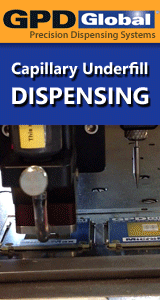Printed Circuit Board Assembly & PCB Design Forum
SMT electronics assembly manufacturing forum.
- SMTnet
- »
- Electronics Forum
- »
- Dewetting
Dewetting
Views: 6035
![]() Hi all,
Recently, we found the IC lead dewetting as shown...
- Jul 06, 2010
by
Sean
Hi all,
Recently, we found the IC lead dewetting as shown...
- Jul 06, 2010
by
Sean
![]()
![]()
![]() Sean,
We can't comment on the EDX report; but, we have se...
- Jul 06, 2010
by
robgd3
Sean,
We can't comment on the EDX report; but, we have se...
- Jul 06, 2010
by
robgd3
![]()
![]()
![]() Rob gave you very good analysis and suggestions for troubles...
- Jul 07, 2010
by
davef
Rob gave you very good analysis and suggestions for troubles...
- Jul 07, 2010
by
davef
![]()
![]()
![]() Thanks Rob and Davef..
...
- Jul 08, 2010
by
Sean
Thanks Rob and Davef..
...
- Jul 08, 2010
by
Sean
![]()
![]()
![]() Hi Sean,
I have seen this issue with lead free component on...
- Jul 09, 2010
by
rafa
Hi Sean,
I have seen this issue with lead free component on...
- Jul 09, 2010
by
rafa
![]()
- SMTnet
- »
- Electronics Forum
- »
- Dewetting






